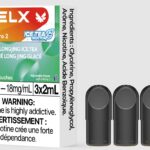
Picture cards are powerful tools in autism speech therapy, offering a visual approach to communication for individuals on the spectrum. These simple yet effective aids help bridge the gap between thoughts and spoken words, providing a tangible way for children with autism to express their needs and desires. Speech therapists use picture cards to support language development, improve communication skills, and enhance social interactions for individuals with Autism Spectrum Disorder.
Speech therapy for autism spectrum disorder can be significantly enhanced with picture card strategies. Picture cards can take many forms, from basic line drawings to detailed photographs, depending on the individual’s needs and preferences. They can represent objects, actions, emotions, or even complex concepts. By incorporating these visual aids into therapy sessions, speech-language pathologists create a structured environment that encourages communication and reduces frustration. This information is for educational purposes and is not a substitute for medical advice. Always seek the guidance of a qualified healthcare provider for individual concerns.
Key Takeaways
- Picture cards provide a visual communication method for individuals with autism
- Speech therapists use picture cards to enhance language development and social skills
Understanding the Role of Picture Cards in Autism Speech Therapy
Picture cards serve as valuable visual aids in autism speech therapy, enhancing communication and language development for individuals on the spectrum. These tools bridge gaps in verbal expression and comprehension.
The Basics of Speech Therapy and Autism Spectrum Disorder
Speech therapy for autism focuses on improving communication skills and social interactions. It addresses challenges in expressive and receptive language common in Autism Spectrum Disorder (ASD).
A speech-language pathologist works with individuals to develop verbal and non-verbal communication. They use various techniques, including picture cards, to support language acquisition and usage.
Picture cards provide visual representations of objects, actions, and concepts. This visual support helps individuals with ASD process and retain information more effectively than verbal instructions alone.
Picture Exchange Communication System (PECS): A Foundation
PECS is a structured approach using picture cards to facilitate communication. It was developed specifically for individuals with autism who struggle with verbal expression.
The system involves exchanging picture cards to convey needs, wants, and thoughts. PECS begins with simple exchanges and progresses to more complex communication.

Key benefits of PECS include:
- Initiating communication
- Making choices
- Expressing needs and desires
- Building sentence structure
PECS serves as a stepping stone to more advanced forms of communication, including speech development.
Expanding Communication Skills Using Picture Cards
Picture cards extend beyond PECS to support various aspects of speech therapy. They aid in vocabulary expansion, sentence formation, and concept understanding.
Therapists use picture cards to:
- Teach new words
- Practice sentence structure
- Develop storytelling skills
- Enhance social communication
Picture cards can be customized to individual needs and interests. This personalization increases engagement and motivation in therapy sessions.
As skills progress, picture cards support the transition to verbal communication. They provide a visual backup when words are challenging to recall or express.
Practical Applications and Strategies in Therapy Sessions
Picture cards offer versatile tools for speech therapists working with autistic individuals. These visual aids enhance communication, promote engagement, and support skill development across various therapy activities.
Tailoring Picture Cards for Individual Needs
Speech therapists customize picture cards to address specific goals for each autistic client. Cards may feature high-interest topics, daily routines, or emotion recognition cues. Velcro-backed cards allow for easy rearrangement and sequencing activities.
Editable digital picture cards provide flexibility for therapists to quickly create personalized materials. These can be printed or used on tablets during sessions.
Therapists often incorporate special interests of autistic individuals into picture card sets. This increases motivation and attention during therapy activities.
Interactive Activities and Games Using Visual Aids
Picture cards form the basis for numerous engaging therapy exercises. Matching games help reinforce vocabulary and categorization skills. Sequencing activities using cards support narrative development and daily living skills.

“I Spy” games with picture cards encourage descriptive language and attention to detail. Turn-taking card games promote social interaction and conversational skills.
Therapists may create visual schedules with picture cards to structure therapy sessions. This supports transitions between activities and reduces anxiety for autistic clients.
Augmentative and Alternative Communication Systems
For nonverbal or minimally verbal autistic individuals, picture cards serve as crucial components of augmentative and alternative communication (AAC) systems. Communication books organized with picture symbols enable functional communication.
Digital AAC apps utilize picture symbols for sentence building and expressing needs. Therapists train autistic clients and caregivers in navigating these systems effectively.
Picture exchange communication systems (PECS) use physical cards to teach requesting skills. Clients learn to exchange picture cards for desired items, building a foundation for more complex communication.
Conclusion
Picture cards are a valuable tool for supporting autism speech therapy. They provide a visual communication system that can help individuals with autism express their needs and wants more effectively. Speech therapists can use these cards to teach new vocabulary, improve social skills, and encourage verbal communication. When implemented consistently and tailored to each individual’s needs, picture cards can significantly enhance the outcomes of autism speech therapy interventions.






